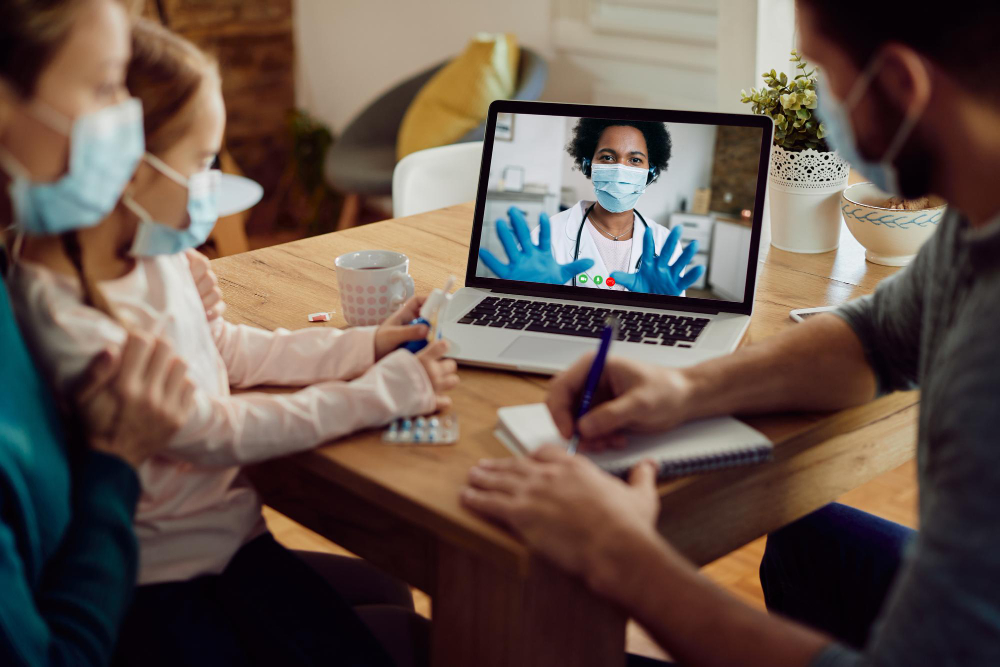Healthcare is no longer confined to the four walls of a hospital. With the rise of telemedicine, healthcare has become more accessible, efficient, and patient-centered. What if the next evolution of healthcare apps isn’t just about convenience, but about transforming the very way we think about healthcare access? Imagine a world where healthcare is a tap away—whether it’s a consultation with a specialist halfway across the world, managing a chronic condition, or tracking your well-being in real-time.
Telemedicine has the potential to redefine how we interact with healthcare. But building a secure and scalable telemedicine app? That's where the real challenge (and opportunity) lies.
In an era where telehealth app development is skyrocketing, how can you stand out in a crowded market and build a telemedicine app that not only solves real-world problems but also leads the way? Let’s explore how you can develop the next-generation telemedicine platform development that will turn healthcare on its head.
Why Now? The Skyrocketing Demand for Telemedicine
The COVID-19 pandemic accelerated telemedicine adoption, and it’s not slowing down anytime soon. According to a 2023 report by McKinsey, telehealth app development saw a 38x growth from pre-pandemic levels. Now, as healthcare costs rise and patients demand more convenient options, telemedicine is becoming an integral part of the healthcare system.
But it’s not just about offering virtual consultations. The future of telemedicine is about building telemedicine software development services that offer more: seamless integration, real-time diagnostics, AI-driven insights, and a personalized experience that keeps patients coming back.

Building a Secure and Scalable Telemedicine App: Where to Start?
The first step in telemedicine app development services is ensuring that your app is built for security and scalability. But how do you create a secure, scalable, and user-friendly solution that meets the needs of both patients and healthcare professionals?
1. Prioritize Security: Patients Need Trust
In healthcare, privacy isn’t just a feature—it’s a requirement. Patients are trusting you with some of the most sensitive information about their lives. Hackers are always evolving their tactics, so ensuring that your telemedicine app development adheres to the highest standards of security is a non-negotiable. Think beyond basic encryption; ensure compliance with HIPAA or GDPR, implement two-factor authentication, and use end-to-end encryption.
But what if you could go beyond just security? What if your telemedicine app could provide real-time, secure medical record sharing between patients and doctors, without the usual paperwork or delays? Imagine integrating AI-powered security features that automatically detect unusual patterns in patient data, flagging potential risks before they even happen.
2. Scalability: Handle the Surge Without a Hitch
As the demand for telemedicine grows, your app needs to handle a larger number of users, consultations, and data. Scalability should be a key priority in telemedicine software development services. The last thing you want is for your app to crash when demand spikes or when there’s an influx of patients needing urgent care.
Invest in cloud-based solutions that provide flexibility, speed, and the ability to scale as your user base grows. Services like AWS or Google Cloud can offer the infrastructure needed for your app to handle surges in traffic without skipping a beat. It’s about building an app that’s reliable, fast, and accessible no matter how many people are using it.
3. Real-Time Diagnostics: The Next Level of Care
Telemedicine isn’t just about video calls. Imagine an app that helps doctors make real-time decisions based on data collected from wearables, like heart rate, blood pressure, or even glucose levels. Through telehealth app development, you can integrate with devices that monitor patients’ vitals 24/7, sending this data straight to their doctors’ dashboards.
Why not take it a step further? Integrate AI-driven diagnostics into your telemedicine app. By analyzing patient data in real-time, the app could alert doctors to potential issues before they become critical. Not only would this make consultations more efficient, but it could also save lives by detecting problems early on.
4. AI and Machine Learning: Your Virtual Healthcare Assistant
What if your telemedicine app could act as more than just a video call service? What if it could use AI and machine learning to predict patient needs, suggest treatment options, and even automate follow-up care?
Here’s an idea: let’s say a patient books a consultation for anxiety. Your app could not only connect them with a therapist but also analyze their health data—sleep patterns, daily activity, and even stress indicators—and offer personalized tips or exercises during the appointment. This level of personalization and intelligence can make the telemedicine app developer experience far more dynamic, creating a digital healthcare experience that is smart and anticipatory.
5. A Seamless User Experience: Make Healthcare Easy
Healthcare apps are notorious for being hard to use. The last thing a patient wants when they’re sick is to struggle with an app that’s clunky, slow, or confusing. The key to a successful telemedicine app development is an intuitive user interface that even the least tech-savvy people can navigate.
Pro tip: Think about the journey. For example, when a patient first opens the app, they should be able to easily find their way to a consultation, whether it’s a video call or chat. After the consultation, the app should offer follow-up reminders, medication tracking, or even a digital prescription. It’s about making the process as smooth and easy as possible.

6. Virtual Health Monitoring: The Doctor Is Always In
Incorporating telemedicine software development services that allow for continuous health monitoring can be a game-changer. Imagine your app monitoring a patient’s condition long after a consultation ends. Through integration with wearable devices, you can keep track of things like heart rate, oxygen levels, and other key metrics—giving both the patient and doctor continuous insight into their health.
What if, on top of that, you could send alerts for routine check-ups or follow-up consultations based on the data the app collects? The power of ongoing health monitoring, combined with telemedicine, would take convenience and care to a whole new level.
7. A Global Network of Healthcare Providers
Healthcare is global, and so is the opportunity. By integrating a network of healthcare providers from across the globe, you could offer patients access to world-class care, no matter where they live. Patients in remote areas could consult with specialists they may not have access to otherwise.
What if your app could facilitate global access to telehealth services, while seamlessly bridging language barriers with real-time translation features? This could make healthcare more accessible and equitable, no matter where you are.
Why Invest in Telemedicine App Development Now?
The future of healthcare is digital, and telemedicine app development is one of the biggest opportunities for businesses in the healthcare sector. With growing demand for remote care, AI-driven healthcare solutions, and personalized patient experiences, there’s no better time to invest in a telemedicine app developer who understands the potential of this industry.
At Olearis, we specialize in telemedicine platform development that brings together cutting-edge technology, personalized care, and seamless experiences. Whether you need a simple app for remote consultations or a fully integrated system with AI and wearables, we have the expertise to help you build a solution that not only meets the needs of today’s healthcare market but leads the way for tomorrow.
Ready to Build the Future of Healthcare?
Telemedicine is already changing the world of healthcare, but we’re just scratching the surface. If you’re ready to build a secure, scalable telemedicine app that sets the standard for the future, Olearis can help. Let’s create something that transforms how people receive care, and makes healthcare more accessible, efficient, and personal than ever before.




